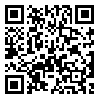Volume 2, Issue 1 (6-2019)
Iran J Health Insur 2019, 2(1): 7-13 |
Back to browse issues page
Download citation:
BibTeX | RIS | EndNote | Medlars | ProCite | Reference Manager | RefWorks
Send citation to:



BibTeX | RIS | EndNote | Medlars | ProCite | Reference Manager | RefWorks
Send citation to:
Shahraki M. Estimation of Supplementary Health Insurance Demand in Iranian Urban Household: Probit Model with Sample Selection. Iran J Health Insur 2019; 2 (1) :7-13
URL: http://journal.ihio.gov.ir/article-1-61-en.html
URL: http://journal.ihio.gov.ir/article-1-61-en.html
Department of Economics, Faculty of Management and Human Science, Chabahar Maritime University, Chabahar, Iran , shahraki.mehdi@gmail.com
Abstract: (6670 Views)
Introduction: The increasing variety and costs of health services, the high share of out of pocket, and the quantity and quality of services covered by basic insurances increased the demand for supplemental health insurance. Considering the importance and necessity of supplementary health insurance, its demand growth and its impact on improving the quality of life, the present study amed at investigating the demand of supplementary health insurance in the urban household of Iran.
Methods: The present descriptive-analytical and applied study with cross sectional design was conducted in 2016 employing the probit econometric model with sample selection and maximum likelihood method. The sample size was 18,809 urban households in Iran's provinces selected via the three-stage sampling method on a systematically randomized basis by the Statistical Center of Iran. Data were extracted from the cost-income questionnaire of urban households and the coefficients of the model were estimated with Stata 14 software.
Results: The results showed that the increase in age, education, the level of literacy, and the marital status of the head of the household increased the probability of demanding for the supplementary health insurance by 0.6%, 0.17%, 6.6%, and 5.3%, respectively. Also, the number of family supporters, having a child under seven years old, and owning a private house increased this probability by 16%, 3.7%, and 0.85%, respectively. The increase in health and medical expenses, as well as income and educational expenditures had a negligible positive effect, while the squared index of the age and education of the head of the household had a negative impact on the demand for supplementary health insurance.
Conclusions: Marital status, age, education level of the head of the household, the number of family supporters, increased health costs per capita, increased education expenditures and the per capita income had a positive impact on the demand for supplementary health insurance by households. Among these variables, the number of family supporters, marital status, and the age of the head of the household had the highest impact and per capita income and education expenditures of the family members had the lowest effect on the demand for supplementary health insurance. Also, the demand for supplementary health insurance by Iranian urban households was a quadratic concave function of the age and education level of the head of the household. Thus, it is recommended to identify and classify households based on the factors affecting their demand and determine the appropriate conditions for the health services coverage corresponding to each class of household. It is particularly necessary to support the elderly in the treatment costs.
Methods: The present descriptive-analytical and applied study with cross sectional design was conducted in 2016 employing the probit econometric model with sample selection and maximum likelihood method. The sample size was 18,809 urban households in Iran's provinces selected via the three-stage sampling method on a systematically randomized basis by the Statistical Center of Iran. Data were extracted from the cost-income questionnaire of urban households and the coefficients of the model were estimated with Stata 14 software.
Results: The results showed that the increase in age, education, the level of literacy, and the marital status of the head of the household increased the probability of demanding for the supplementary health insurance by 0.6%, 0.17%, 6.6%, and 5.3%, respectively. Also, the number of family supporters, having a child under seven years old, and owning a private house increased this probability by 16%, 3.7%, and 0.85%, respectively. The increase in health and medical expenses, as well as income and educational expenditures had a negligible positive effect, while the squared index of the age and education of the head of the household had a negative impact on the demand for supplementary health insurance.
Conclusions: Marital status, age, education level of the head of the household, the number of family supporters, increased health costs per capita, increased education expenditures and the per capita income had a positive impact on the demand for supplementary health insurance by households. Among these variables, the number of family supporters, marital status, and the age of the head of the household had the highest impact and per capita income and education expenditures of the family members had the lowest effect on the demand for supplementary health insurance. Also, the demand for supplementary health insurance by Iranian urban households was a quadratic concave function of the age and education level of the head of the household. Thus, it is recommended to identify and classify households based on the factors affecting their demand and determine the appropriate conditions for the health services coverage corresponding to each class of household. It is particularly necessary to support the elderly in the treatment costs.
Type of Study: Research |
Subject:
Special
Received: 2019/03/1 | Revised: 2021/04/20 | Accepted: 2019/05/25 | ePublished: 2019/06/22
Received: 2019/03/1 | Revised: 2021/04/20 | Accepted: 2019/05/25 | ePublished: 2019/06/22
Send email to the article author
| Rights and permissions | |
 |
This work is licensed under a Creative Commons Attribution-NonCommercial 4.0 International License. |





